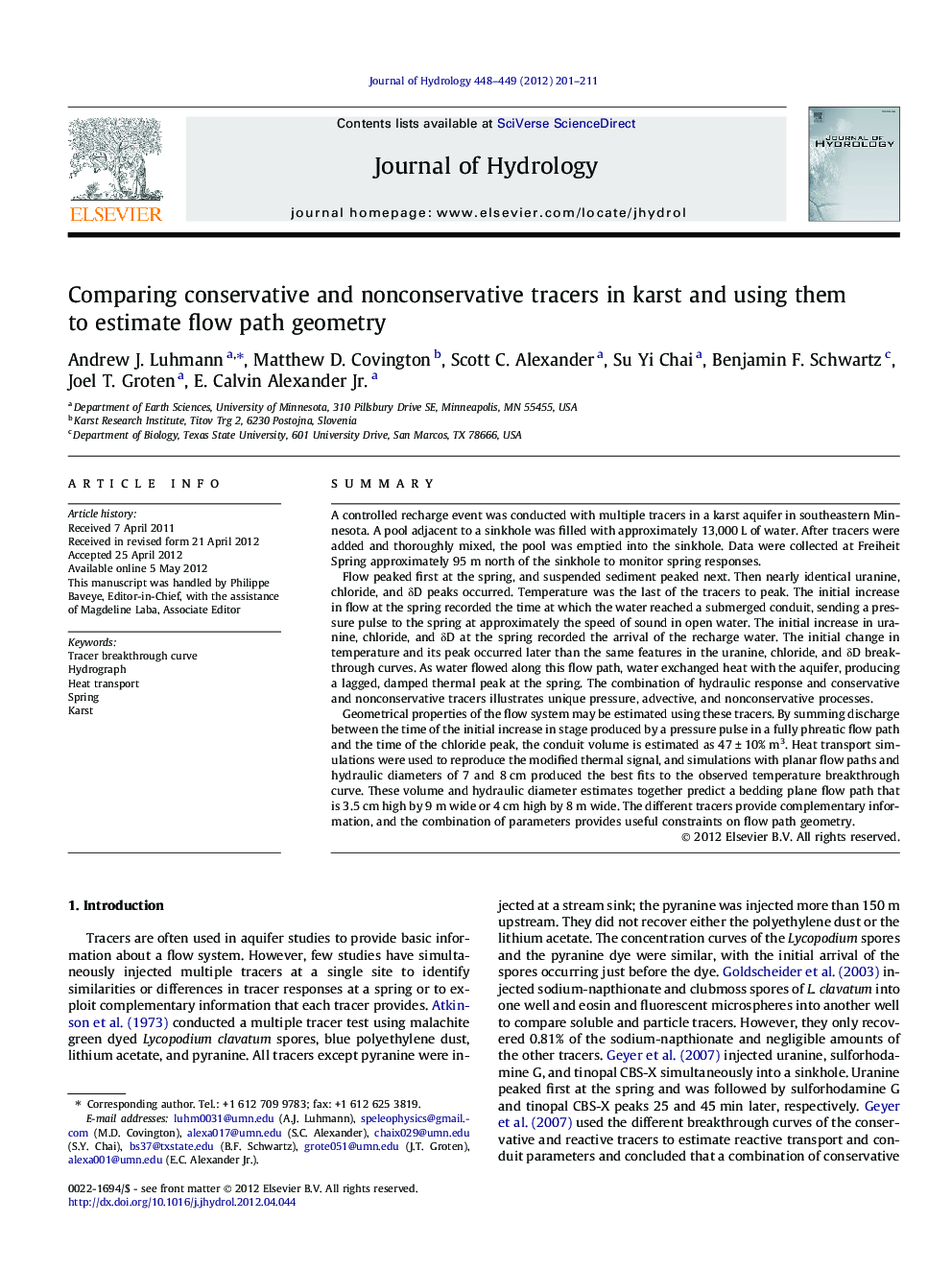| Article ID | Journal | Published Year | Pages | File Type |
|---|---|---|---|---|
| 4576966 | Journal of Hydrology | 2012 | 11 Pages |
SummaryA controlled recharge event was conducted with multiple tracers in a karst aquifer in southeastern Minnesota. A pool adjacent to a sinkhole was filled with approximately 13,000 L of water. After tracers were added and thoroughly mixed, the pool was emptied into the sinkhole. Data were collected at Freiheit Spring approximately 95 m north of the sinkhole to monitor spring responses.Flow peaked first at the spring, and suspended sediment peaked next. Then nearly identical uranine, chloride, and δD peaks occurred. Temperature was the last of the tracers to peak. The initial increase in flow at the spring recorded the time at which the water reached a submerged conduit, sending a pressure pulse to the spring at approximately the speed of sound in open water. The initial increase in uranine, chloride, and δD at the spring recorded the arrival of the recharge water. The initial change in temperature and its peak occurred later than the same features in the uranine, chloride, and δD breakthrough curves. As water flowed along this flow path, water exchanged heat with the aquifer, producing a lagged, damped thermal peak at the spring. The combination of hydraulic response and conservative and nonconservative tracers illustrates unique pressure, advective, and nonconservative processes.Geometrical properties of the flow system may be estimated using these tracers. By summing discharge between the time of the initial increase in stage produced by a pressure pulse in a fully phreatic flow path and the time of the chloride peak, the conduit volume is estimated as 47 ± 10% m3. Heat transport simulations were used to reproduce the modified thermal signal, and simulations with planar flow paths and hydraulic diameters of 7 and 8 cm produced the best fits to the observed temperature breakthrough curve. These volume and hydraulic diameter estimates together predict a bedding plane flow path that is 3.5 cm high by 9 m wide or 4 cm high by 8 m wide. The different tracers provide complementary information, and the combination of parameters provides useful constraints on flow path geometry.
► Uranine, chloride, and δD breakthrough curves are nearly identical. ► Water exchanges heat with aquifer, producing a modified thermal signal at spring. ► Thermal signal and heat transport model are used to estimate hydraulic diameter. ► Different tracers provide unique information about flow path.
